“Sir, your taxi is here…”
I hadn’t ordered a taxi.
They called back.
“Maybe you would like to come speak to your taxi driver.”
I dressed, went down and, sure enough, ‘my’ moto taxi guy stood waiting.
The day before I caught a ride with Arun out to Anisakan Falls, a picturesque spot at the bottom of an intense forty-five minute hike. He was a pleasant young man, semi-fluent in heavily accented Nepali English, but I simply was not interested in the “Very pretty caves! Very famous!” on offer for today.
I appreciated Arun’s persistence as he attempted to support two siblings and a mother, but after twenty days in Myanmar I had enough Buddha imagery for a few days. I laid low and went for a stroll around Pyin Oo Lwin instead.
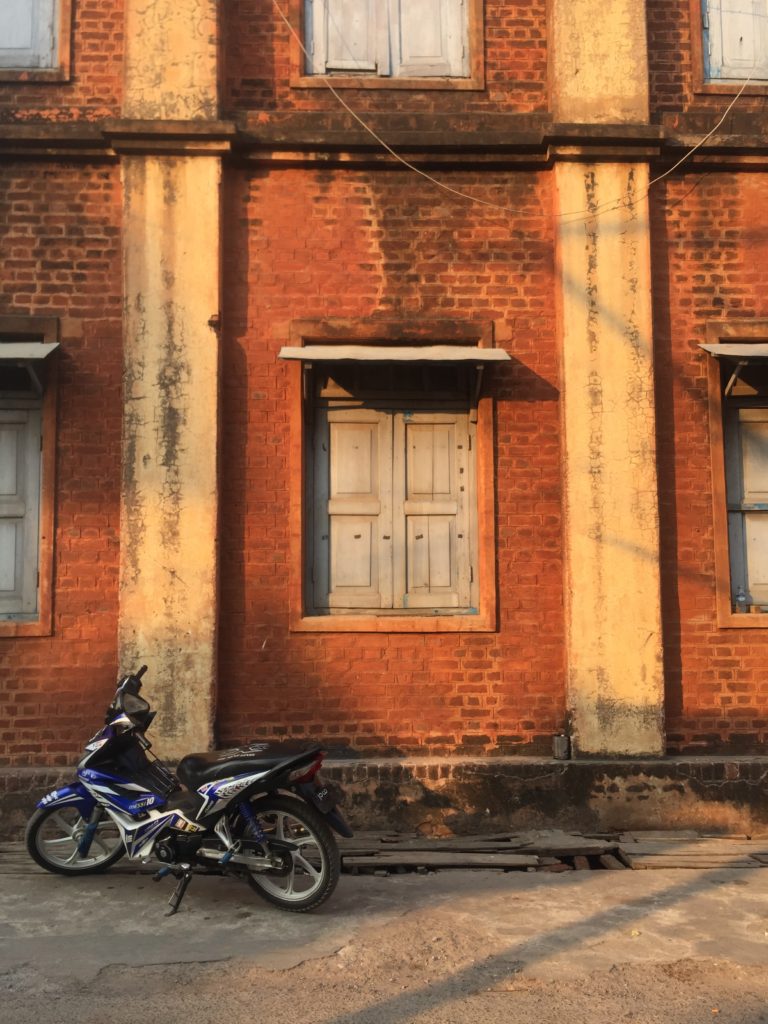
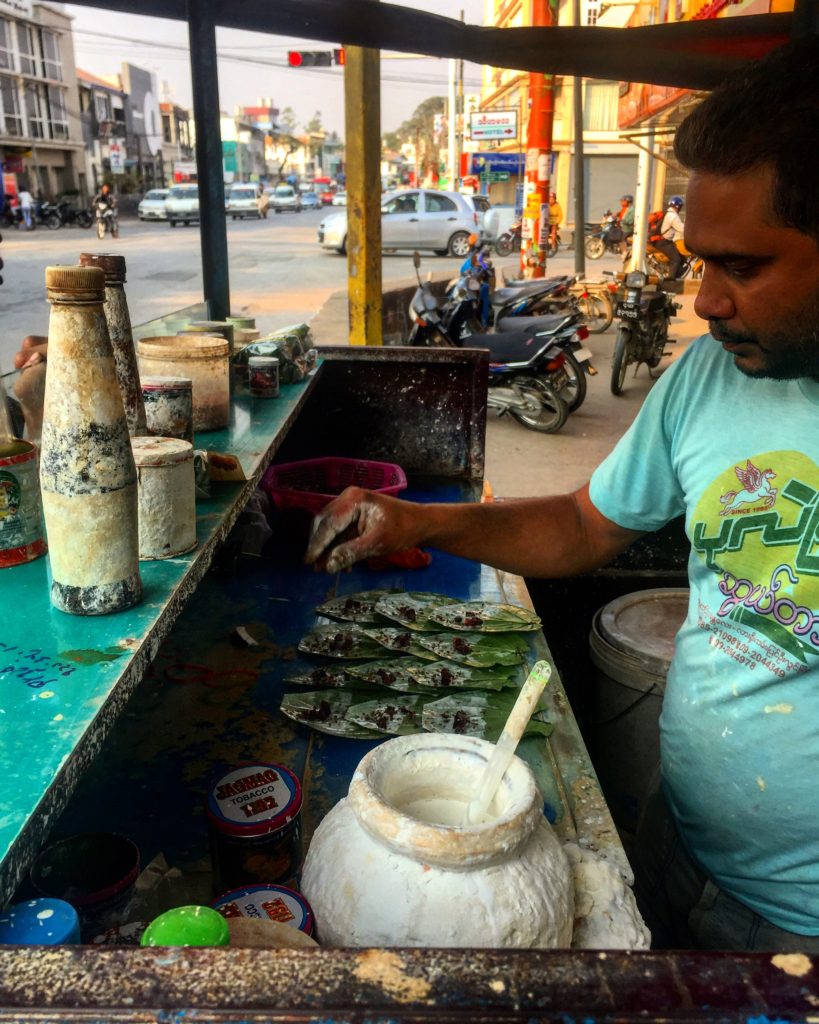
Check out some expert betel nut production here and here.
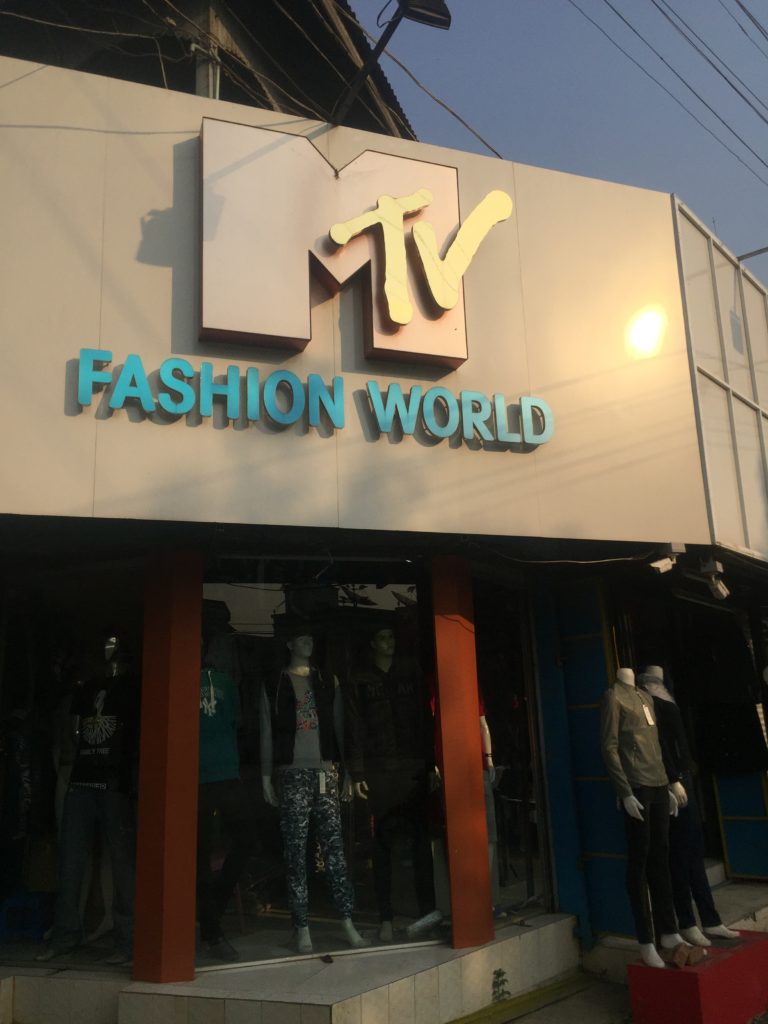
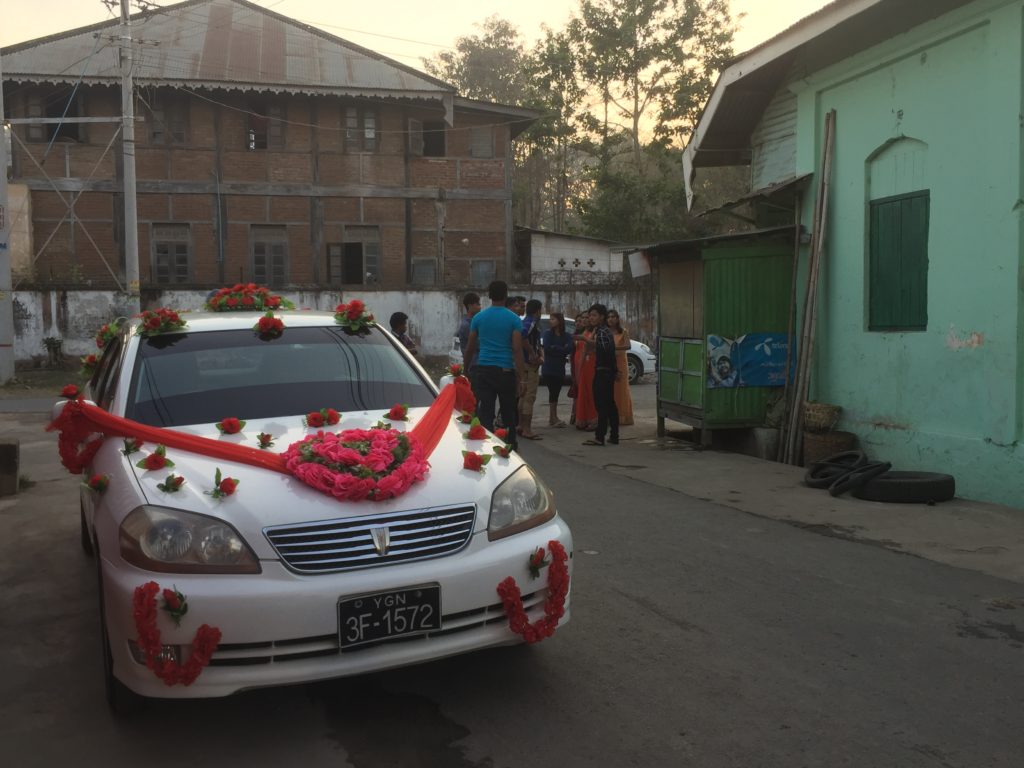
PYIN OO LWIN
Pyin Oo Lwin makes for a lovely contrast with the rest of Myanmar.
The British made use of Pyin Oo Lwin as a hill station, a leafy retreat from the oppressive heat down in Mandalay. Often you’ll hear or see the city referred to as Maymyo, literally “May’s town” in Burmese. The Brits named the place after Colonel James May, stationed here in 1886.
For years Maymyo was the summer capital of British Burma.
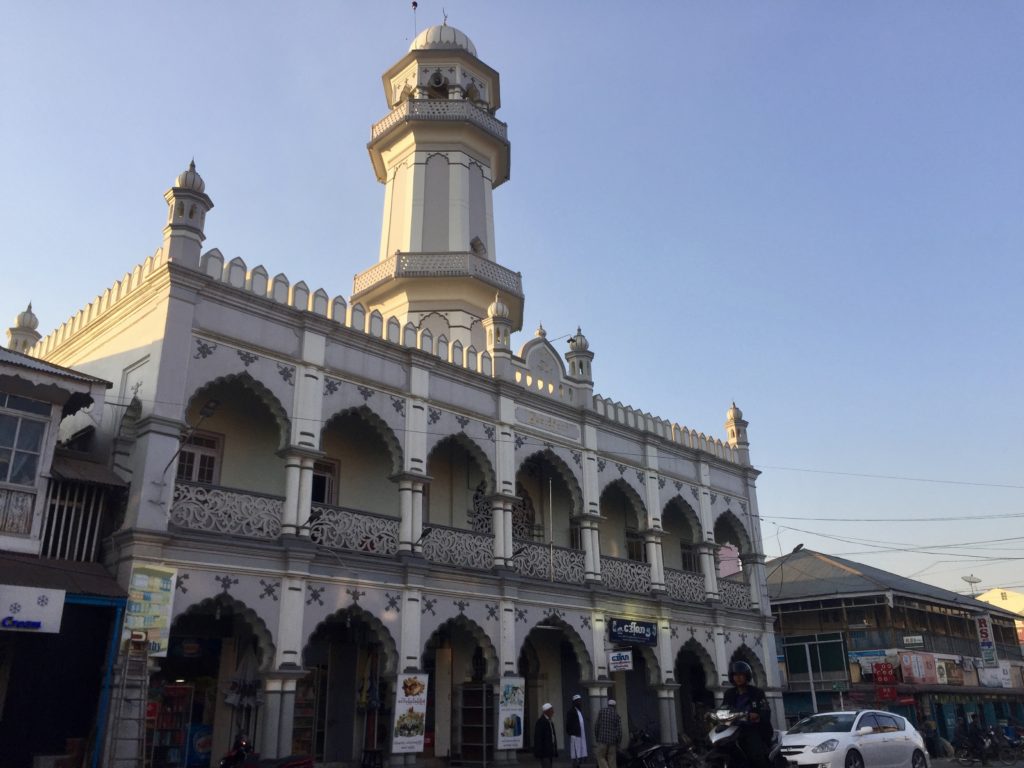
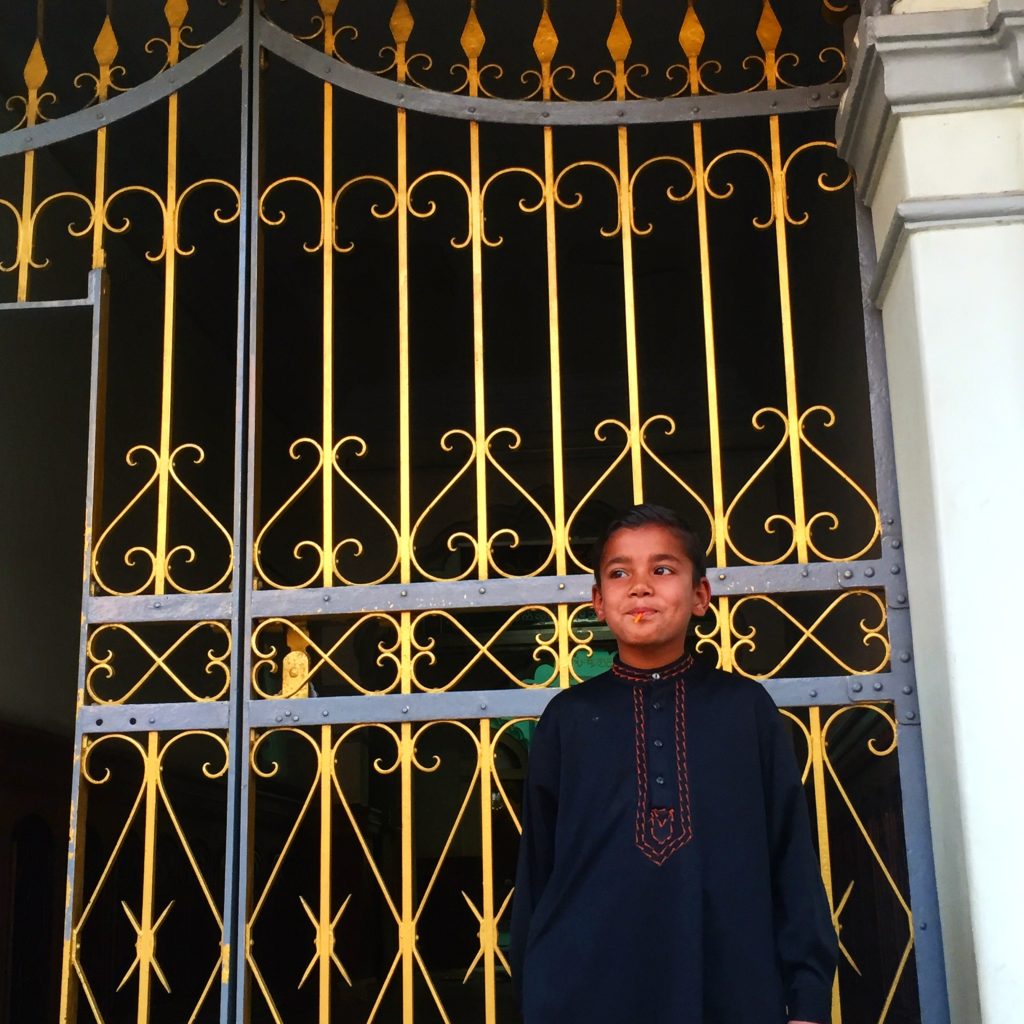
Pyin Oo Lwin today is not going to win any capital city impersonation contests, though a bit of its colonial architecture survives. The city’s attraction lies in its inherent differences with the rest of Myanmar.
Riding up the switchbacks in a taxi from Mandalay the changes are not immediate, more gradual. After weaving in and out of heavy truck traffic on the hillsides, Route 3 stretches out, the recently reconstructed blacktop smooth and inviting. By the time we pull into town, three thousand feet up in the hills, the air is fresh, the scent of the trees calming. I felt my blood pressure drop.
THE HLAING CAFE
My afternoon walk led me to the Hlaing Cafe, a Nepali-owned restaurant in the town’s back streets. It was an open air establishment on a quiet corner with good write ups. The Indian and Nepali influence here is strong — just a shade under 10% of residents trace their heritage — so I opted for Nepali food.
The late afternoon light streamed beautifully in to the kitchen so I went for a closer look. I dined early and had the place virtually to myself. The owner/chef seemed to enjoy inviting me in for a tour and some photos.
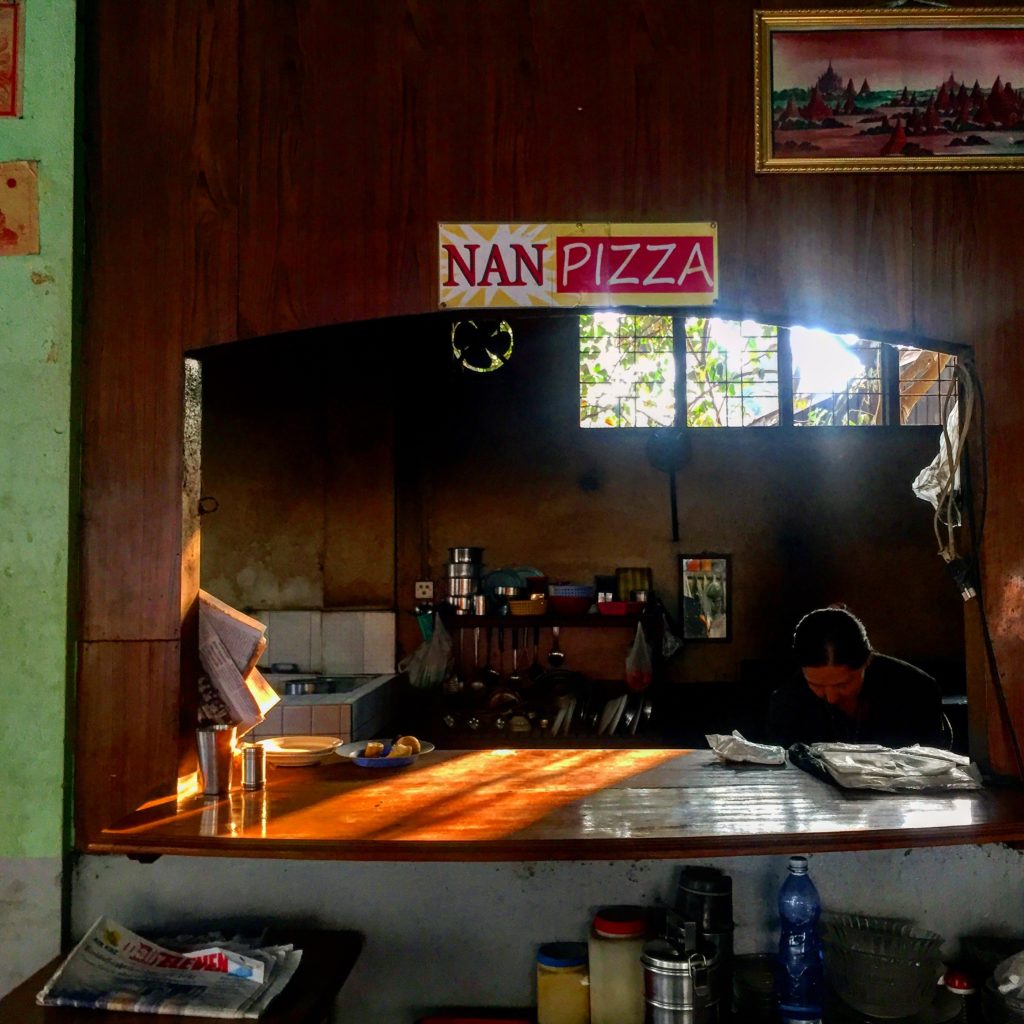
My second naan pizza was going down rather well when a pair of locals arrived and sat down nearby. They were very friendly and we discussed all manner of topics. They taught English at a local school for eleventh graders and insisted, among other points, Burmese teenagers were no different from American ones.
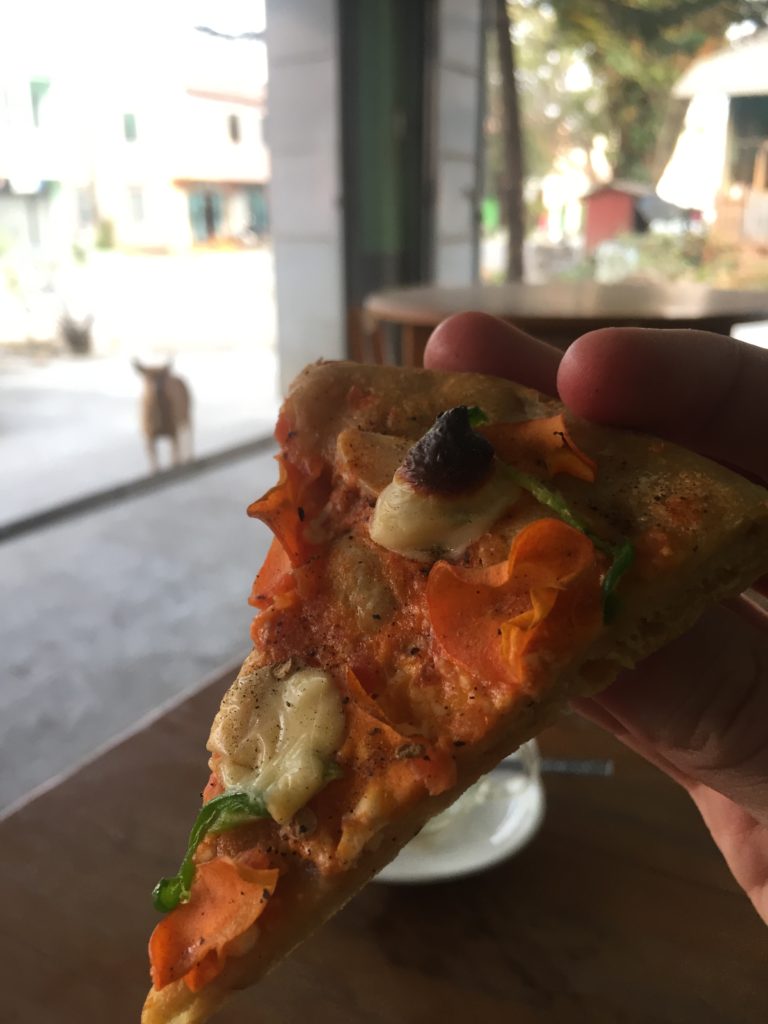
As the guys settled up with the owner I understood one word — “foreigner”. Hmm. They insisted on paying for my meal. I initially refused, but they said it was their pleasure. I was touched. The average teacher salary in Myanmar is US$130/month. My naan pizzas probably cost them about US$6.
We shook hands and I waved as they drove away.
The owner said they were regular customers.
These types of interactions are so typical of Myanmar, they almost supersede the actual attractions a traveler considers before a trip. At least for me they did.
Hot air ballooning over Bagan? Exploring Buddha caves well off the beaten path? Riding an E-bike around Bagan? All experiences and sites I had dreamt of for years and very much looked forward to. And they all delivered.
But the daily exchanges and kindness of the locals surprised and touched me at every turn, much more so than anywhere I have ever been.
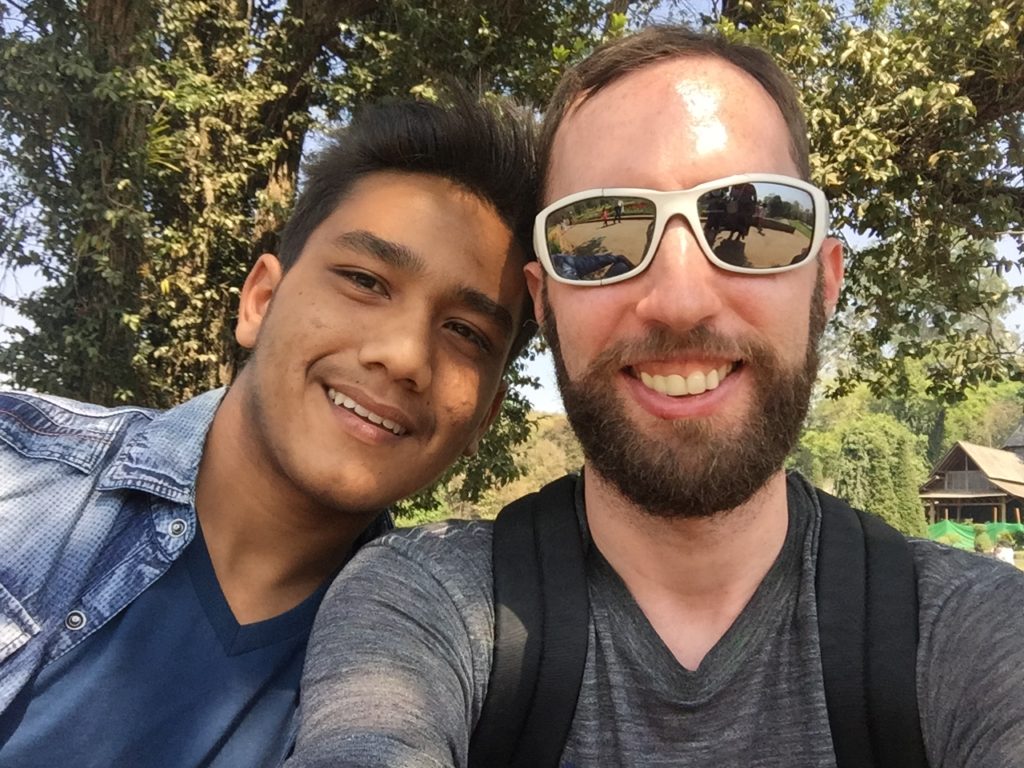
No matter what anyone says, the number one attraction in Myanmar isn’t Bagan or Mandalay or Inle Lake — it’s the people.
PYIN OO LWIN’S LOCALS
One of my favorite aspects of traveling in the developing world is the ease of touring and experiencing local culture and sights. No need to actively seek activities out, though, as you will be offered all manner of options simply because you are very obviously a tourist. As it was here.
On my first night in town a voice called out — “Sir, hello sir!”
It was Arun, my soon-to-be Nepali friend. We exchanged mobile numbers and agreed on a plan for the following day. 8000 kyat for the waterfall — less than US$6. About double to go to the famously lush National Kandawgyi Botanical Gardens afterward as well.
I went all in.
ANISAKAN FALLS
Arun picked me up bright and early the following morning and arrived with a wonderful surprise — a helmet. Big deal, right? Helmets are not especially common in Myanmar. You learn to make do for short hops around town, but out on the highway they’re life savers.
Arun seemed like my kinda guy.
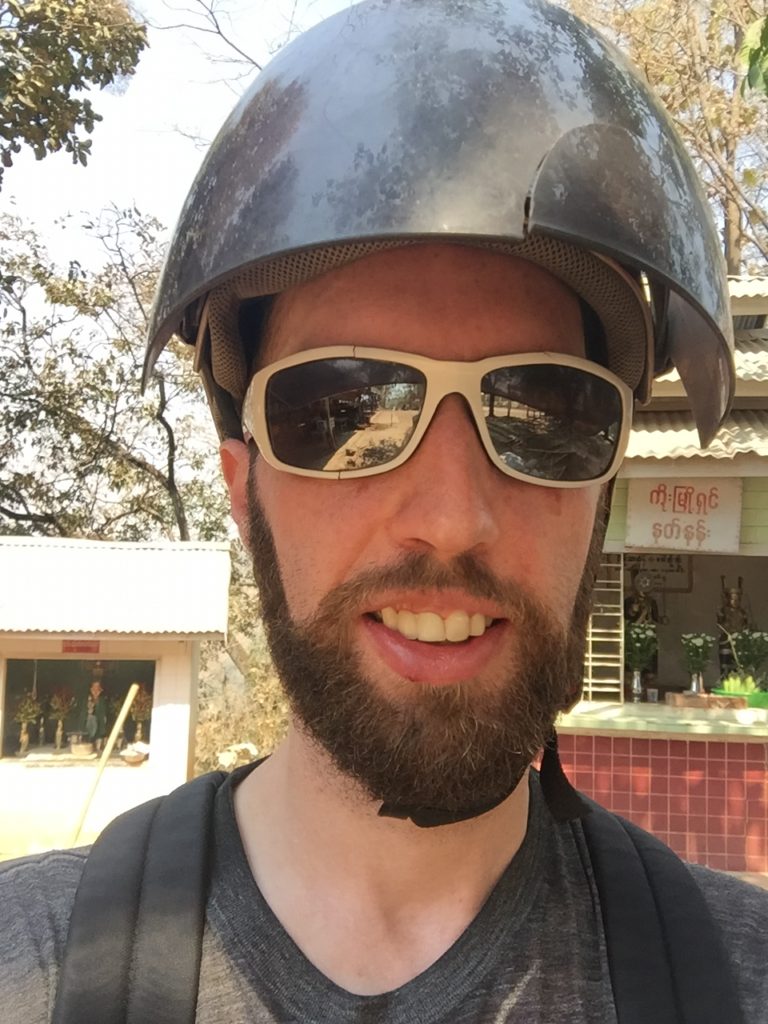
We headed out onto Route 3 and wound our way about twenty minutes south of Pyin Oo Lwin. Riding on the back of a motorbike in the developing world isn’t always the most relaxing experience, but up here in the hills the cool morning air and green scenery ensured a refreshing start to the day.
A quick turn down a rather bumpy side road led to a small parking and a teahouse. Arun pulled over and hopped off. He pointed me toward the rather steep descent, wished me well and sat down for a coffee.
“See you in a couple of hours!”
Off I went.
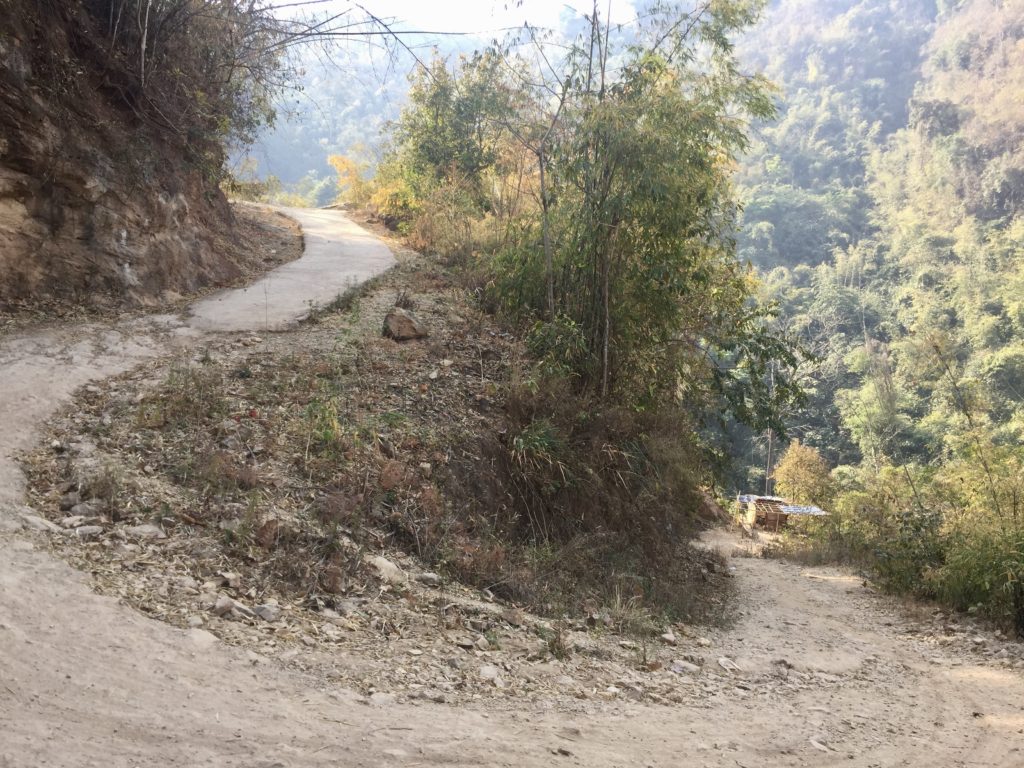
Thirty minutes later I began to hear water flowing in the distance. One or two final bends in the path and I made my first sighting of the falls. Everybody knows them as Anikasan Falls (after the surrounding town) but the proper name is Dat Taw Gyaint.
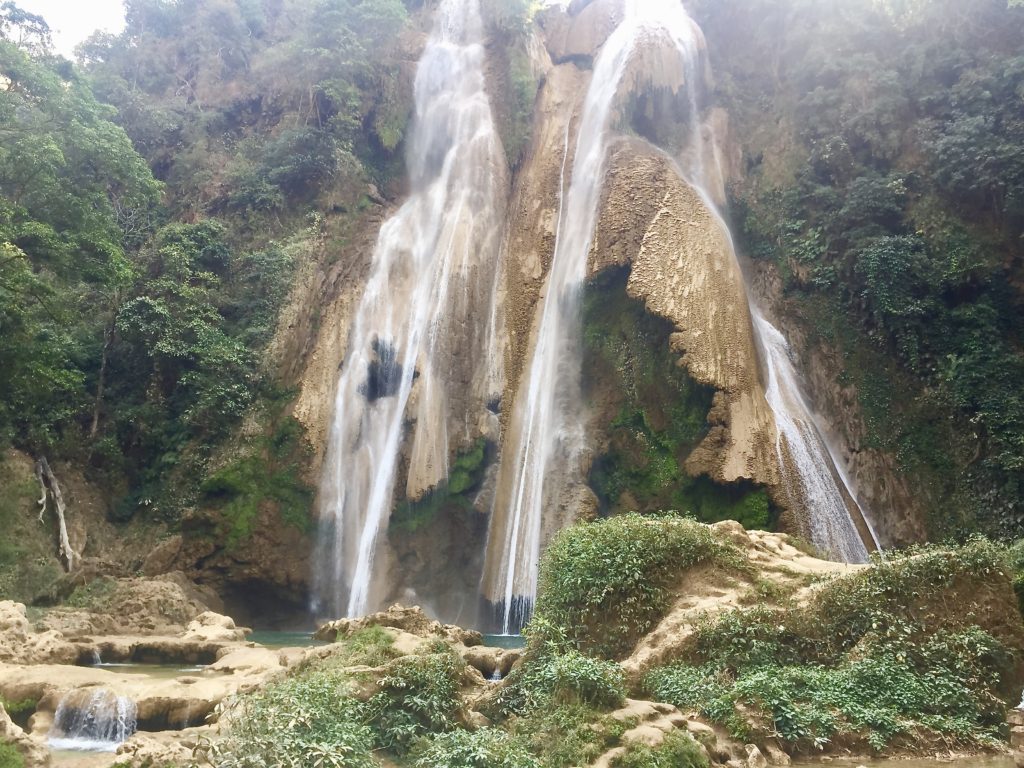
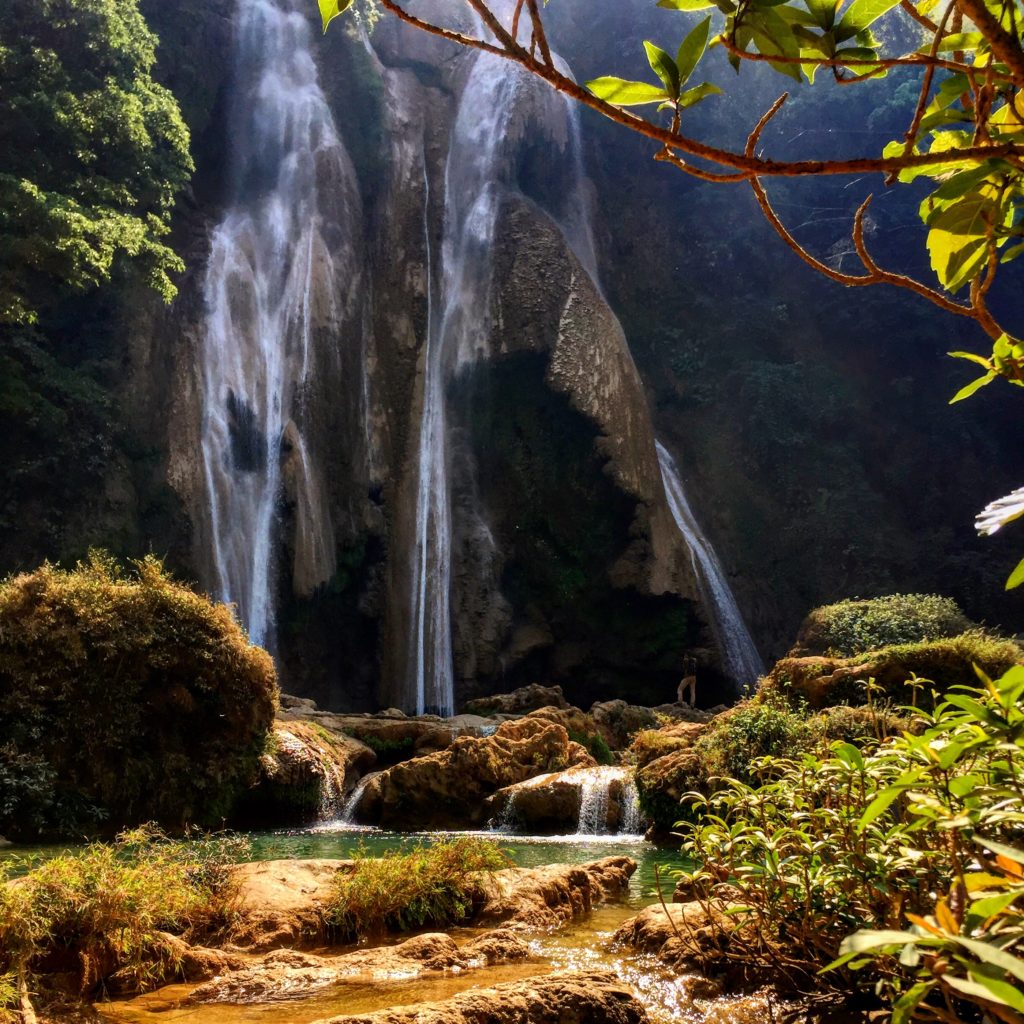
A few backpackers came and went. A local couple settled in for a handful of photos.
I took a seat at a small teahouse/snack stand/souvenir shop a short walk from the water and relaxed with a “Myanmar tea”. That’s powdered tea mix from a pouch, ubiquitous in Myanmar. It’s unbelievably sweet, but so, so good!
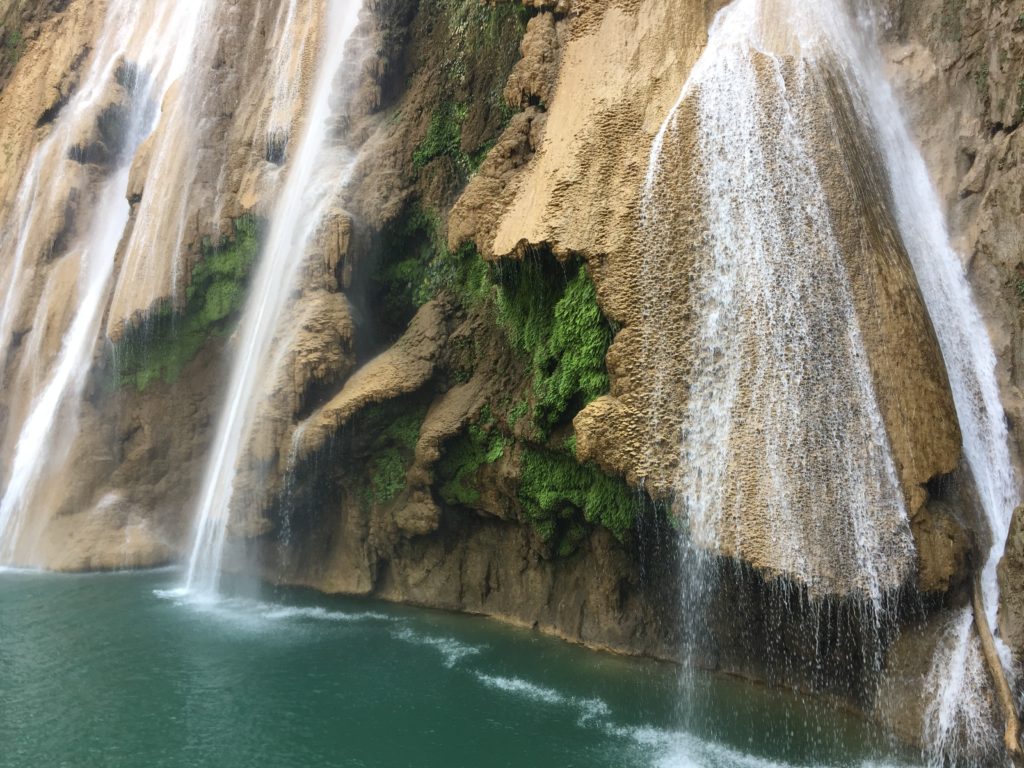
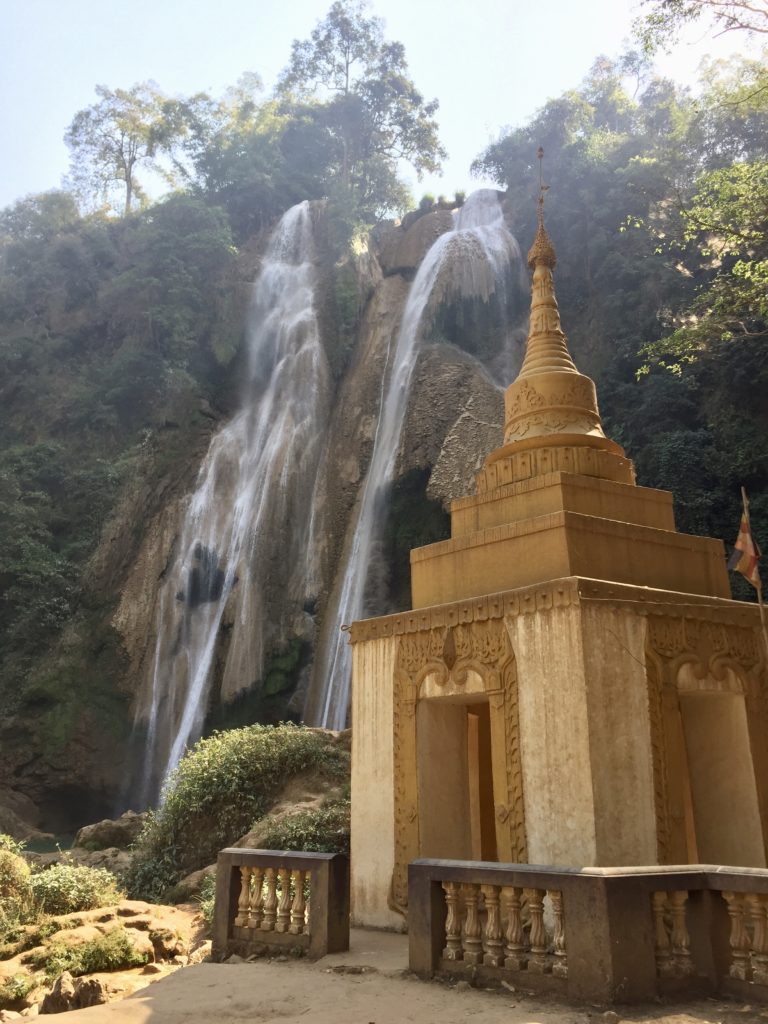
About that incline? Yeah, it’s a steep hike. Be prepared. I climbed up late morning and still managed to get a bit of shade on the way back.
I sat with Arun and had another beverage before we made our way to stop number two.
THE NATIONAL KANDAWGYI BOTANICAL GARDENS
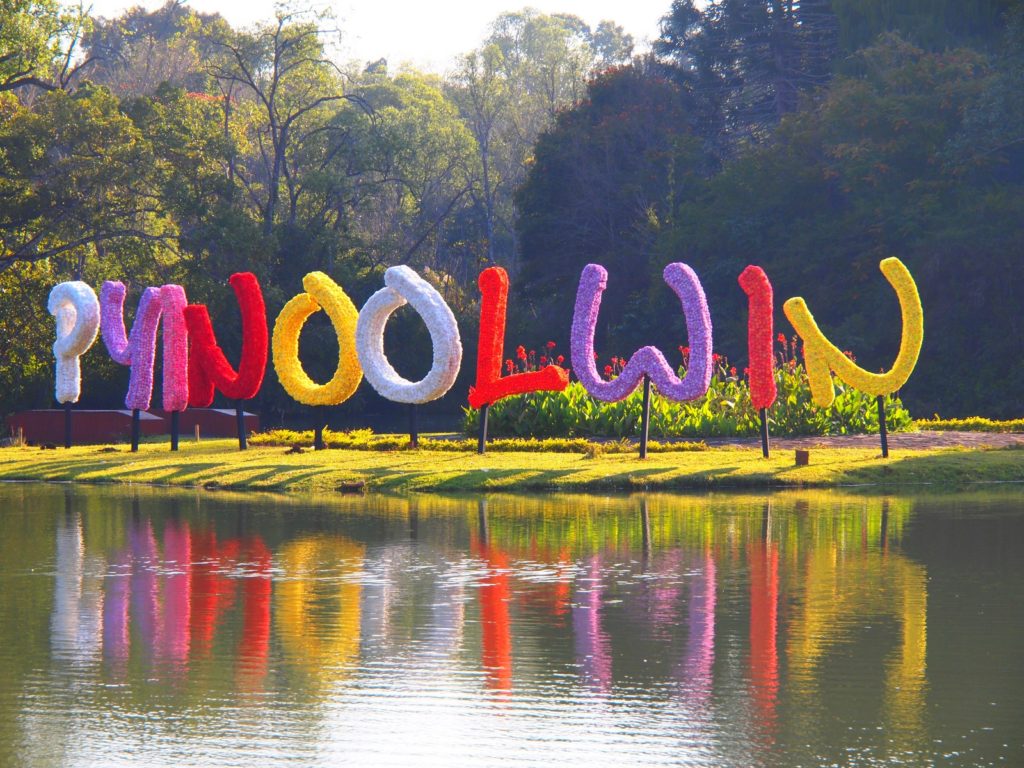
Myanmar in March isn’t the greenest place on Earth, so trust me when I say the gardens were a wonderfully pleasant way to while away a couple of hours. Colorful flowers! Green grass! Shady trees! Water fountains!
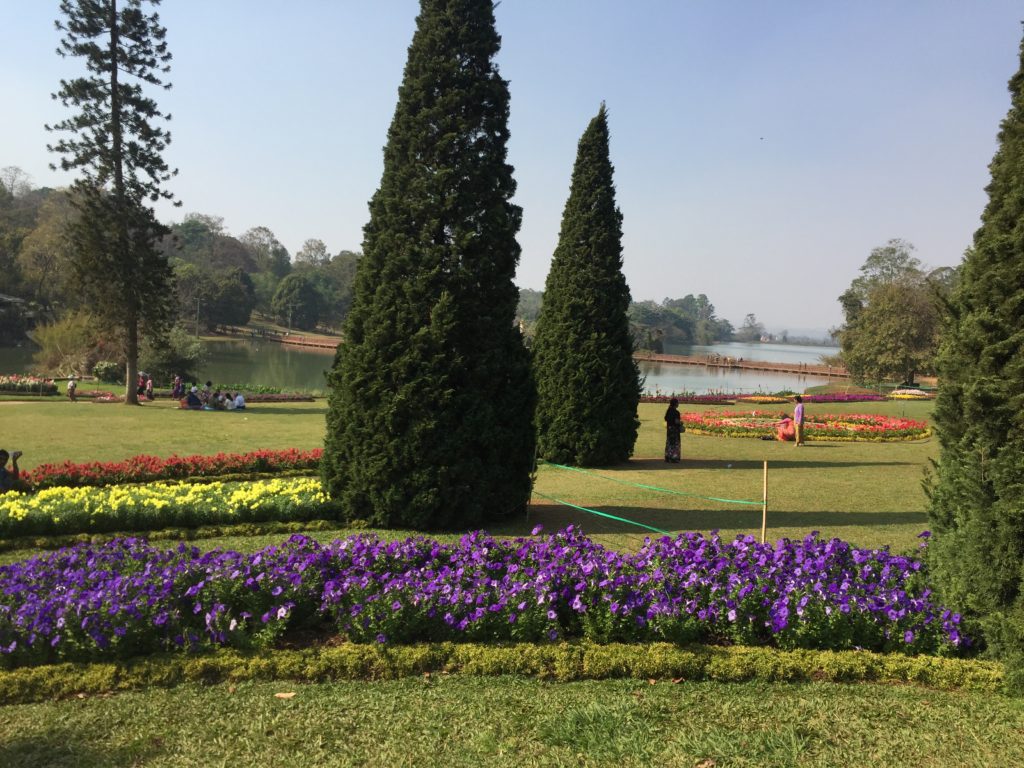
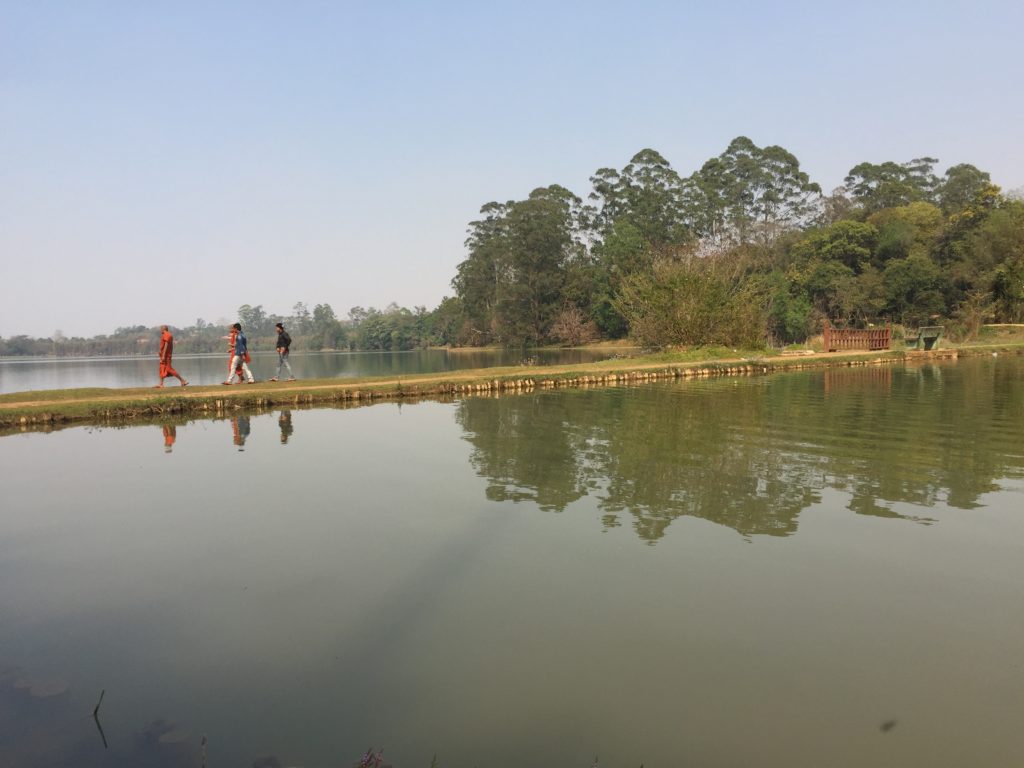
After strolling the gardens, taking a bunch of obligatory photos with the locals, goofing around with kids and chatting with young monks, I retreated to the quiet of the Nan Myint Tower for a bit of temporary solitude. The odd 12-story tower tucks in at the back of the gardens, adjacent to the dusty butterfly museum.
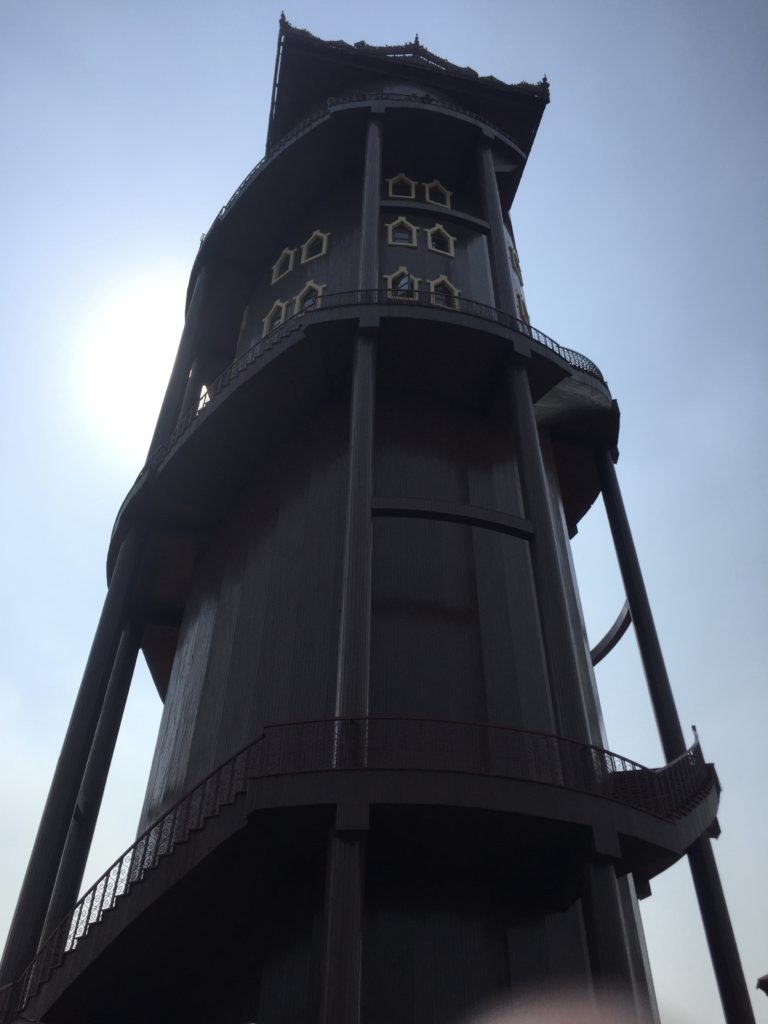
Twelve flights of stairs is not my idea of relaxing capper to the day, especially in the March heat, but parking it in the shade at the top, kicking off my shoes and enjoying expansive views and a lovely breeze made the effort more than worthwhile.
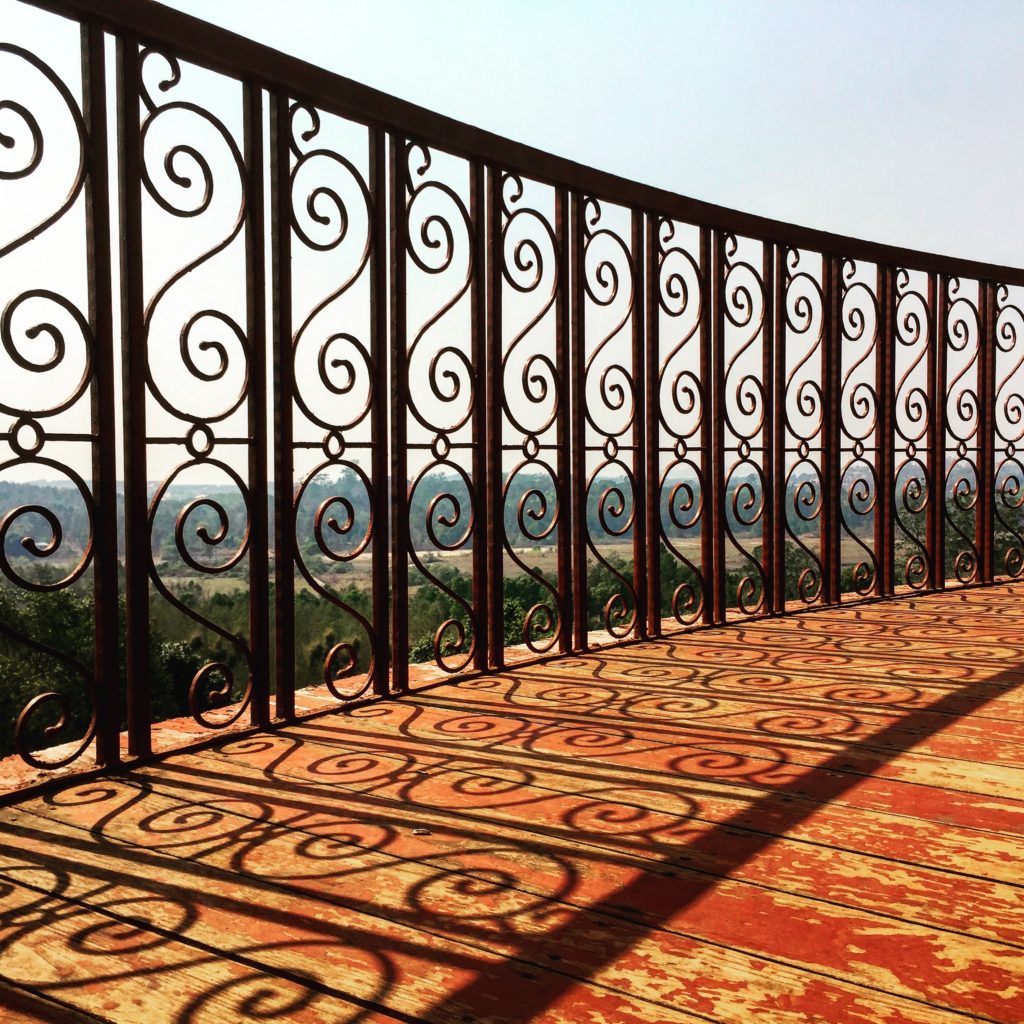
PYIN OO LWIN’S #1 CHEF
I eventually made my way back to the gate to rendezvous with my next ride — Arun’s mom. Arun found some extra work and passed me up the chain of command. He invited me to their home earlier in the day and called Annie to schedule my meal; “Mom, my new friend is coming for dinner!”
Fifteen minutes later I sat in their simple home, sparsely furnished, a Buddhist yogi calendar on one wall. My meal soon arrived; masala tea, beans, curried spinach with mint, tamarind and onions and fresh made roti. The food on offer was basic, but Arun spoke the truth when he called his mother a good cook; this was some of the most delicious food I had eaten in Myanmar.
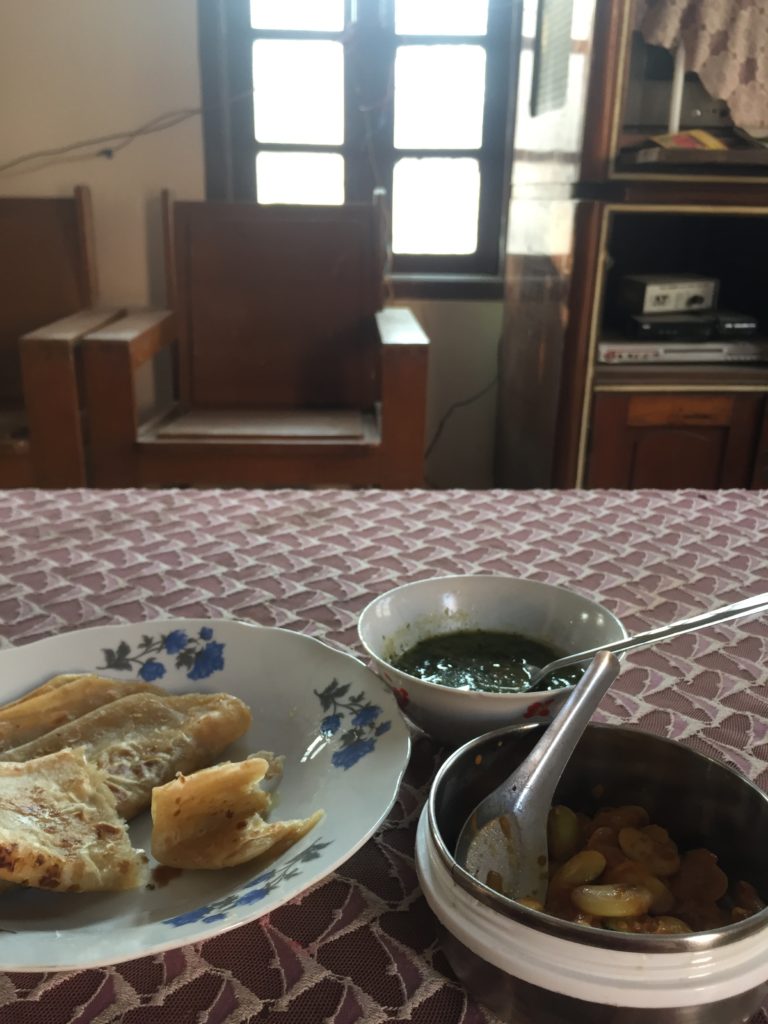
Sometimes it’s difficult to explain exchanges like this to the people back home who don’t travel much. Being wary of “strangers” is a theme from birth. That wariness seems to hang around into adulthood too. That’s a shame, because isn’t a stranger just someone you’ve yet to meet? Being open to random interactions on the road is what memories are made of.
I needed a few provisions for my upcoming trek, so Annie wound up driving me to the main shopping center in town. On the way back I received the scenic tour of Pyin Oo Lwin before calling it a day back at my hotel.
DO IT YOURSELF
Getting To Pyin Oo Lwin
Pyin Oo Lwin is located along the major highway and railway line heading northeast from Mandalay. You have two options — road or rail.
Buses make the run up from Mandalay all day long (generally 5a-5p). Fares 2500-3000 kyat (US$1.65-$1.98). Depending on traffic and road construction, count on approximately 2.5 or 3 hours.
As with any place in Myanmar, bus tickets are easily arranged through your accommodation. Don’t waste time trying to get to the station and purchase your own ticket. It isn’t worth the hassle, especially in Mandalay.
Taxis are my preferred method of transportation between Mandalay and Pyin Oo Lwin. Drivers are willing to take solo travelers on this route — you’ll have to negotiate — but the majority catch rides in shared taxis. Again, hotels or guesthouses can arrange front door pickups.
On departure from Pyin Oo Lwin, taxis meet the train coming in from Hsipaw each afternoon. Walk off the train, into the parking lot and hop in a taxi. I paid 6000 kyat (US$3.96) for one seat. A couple took the back and we were off, just under 2 hours to Mandalay in evening traffic.
Trains ply this famous stretch of rail, the highlight being the crossing of the Goteik Viaduct. The most dramatic segment lies beyond Pyin Oo Lwin and for that reason most travelers restrict their train rides between Pyin Oo Lwin and Hsipaw. The train departs Mandalay at the altogether rude hour of 4:00am — another reason most foreigners skip this first section.
Getting Around Pyin Oo Lwin
Horse-drawn carriages are a relic of the town’s British colonial past. You’ll see them out and about, although their numbers have dwindled over the years. A little tourist transportation niche has been carved out and a brief ride is an enjoyable way to head out to the gardens.
Local motorbike drivers will find you or your accommodation can arrange something in Pyin Oo Lwin. I am happy to pass along Arun’s mobile number to anyone interested in hooking up with him. He’s a great guy, extremely friendly and kindhearted. You won’t go wrong with him showing you around.
Sleeping in Pyin Oo Lwin
I stayed at the Royal Green Hotel. Very nice place and especially recommended if you get in on a special internet rate. Immaculately clean. Very pleasant and helpful staff. Expect the standard hybrid Burmese/Western breakfast selections. It’s too far to walk with bags from the train station, so keep that in mind. A quick motorbike ride will get you there. There are a handful of decent restaurants/cafes in the area and the central market is about fifteen minutes walk.
Eating in Pyin Oo Lwin
As mentioned above, I enjoyed an early dinner at the Hlaing Cafe. I also went for another dinner at a peculiar place called Krishna. Why peculiar? The dining area is basically the front room of the family home. Expect a kid or two to be engaged in homework while an adult watches television or chats with relatives. The food is definitely top-notch. And cheap. 3000 kyat (US$1.98) will net a curry with fresh-baked chapatis. Excellent lassis too.
Seeing the Sights
The National Kandawgyi Botanical Gardens are wonderfully lush and a real contrast to most of the main tourist spots in Myanmar, especially during the dry season. The property is huge — 435 acres (176 hectares). Devote half a day to strolling the grounds and interacting with the locals. It is a popular attraction. Open 8a-6p daily. Foreigner entrance fee is 6500 kyat (US$4.29).
Anisakan Falls (aka Dat Taw Gyaint) is worth the trek. It takes about twenty minutes by motorbike to reach the turn off for the falls. Up next? A thirty minute hike to reach the bottom of a very steep half gravel, half rock road on which only local monks are supposed to operate vehicles. The return trip is no joke. Steep, hot, sunny. Bank on forty-five minutes to more than an hour, depending on your level of fitness. If you have knee issues, forget it. There is a small restaurant/drink/souvenir stand near the falls. Visit on a weekday for more solitude.
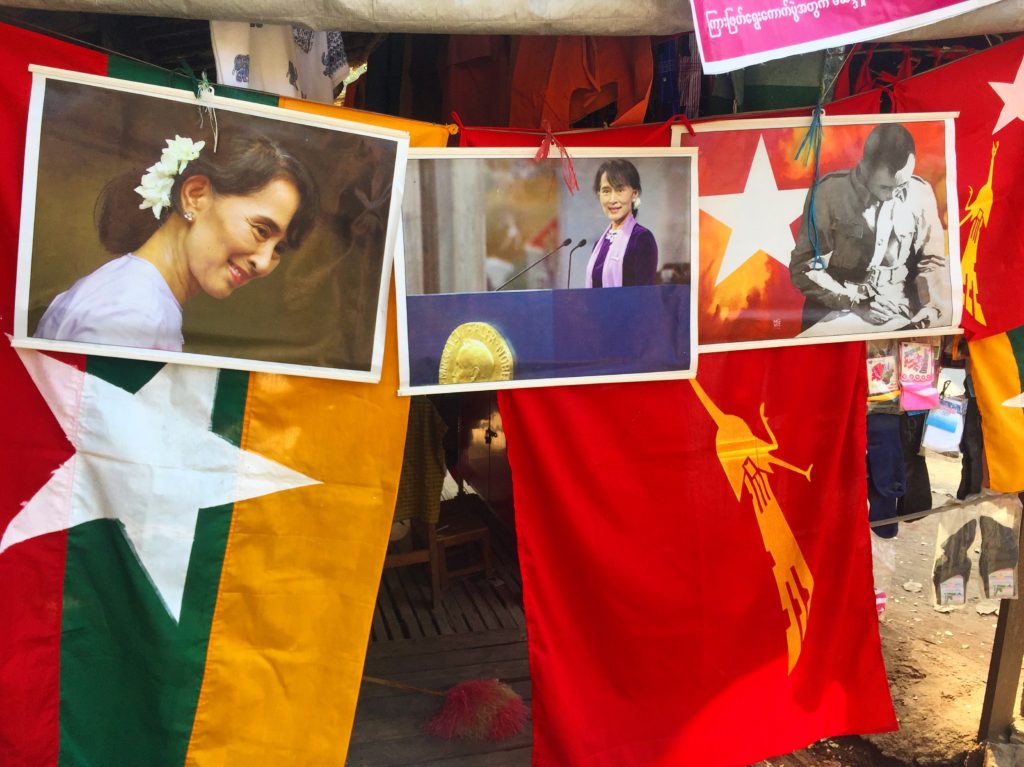

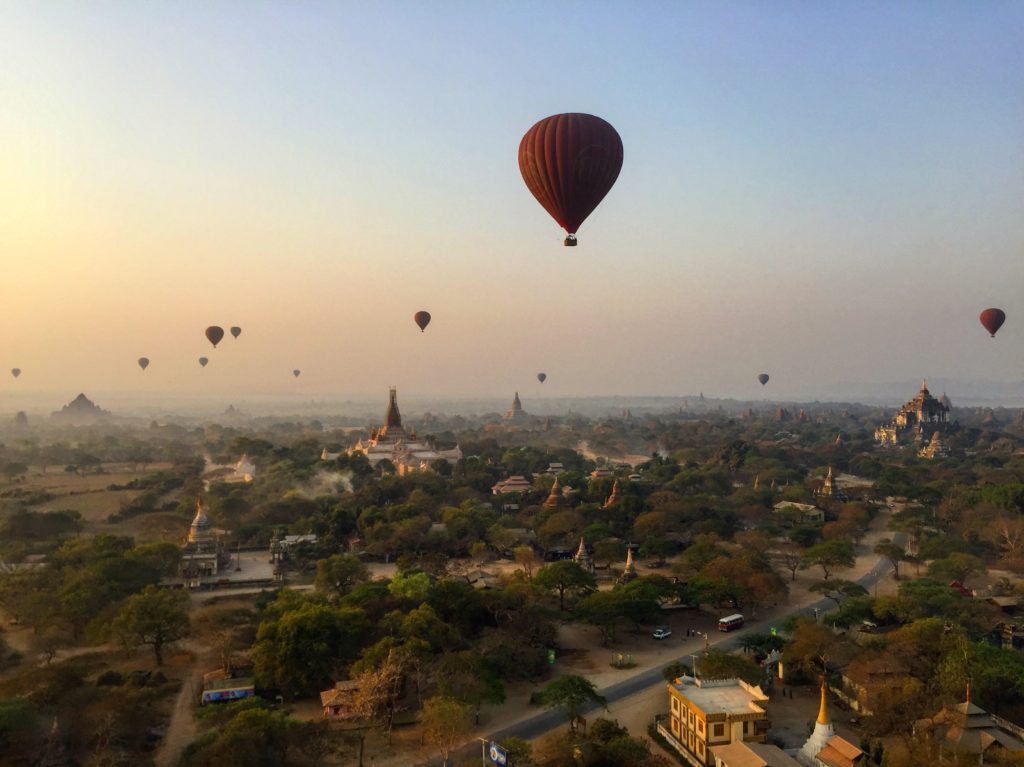
hI, Awesome blog, would u mind please sharing the motorbike guy phone number? I would love to contact him , I will be visiting POL and it sounds great to visit the falls, thanks, Sebastian
Thanks! Lots of cool stuff to see in and around Pyin Oo Lwin. I wish I had another day…
I will email Arun’s phone number, no problem.
A recent post on the Myanmar board at Trip Advisor mentioned another place outside Pyin Oo Lwin called Dee Doke Waterfall. Sounds like more difficult to get to, but you may be interested.
Chris
thanks buddy, u are the best
No worries.
Enjoy your visit!
Hi! great post! Can I grab Arun’s Number from you?
Hey Mui, thanks
Definitely. I will send it over via email.
Enjoy your trip
Love, love, LOVE! You really know how to set the scene in your writing… I really hope to be able to do more travel like this in future – except for the motorbike part! I’m terrified of them! 🙁 Doh!
An Asia travel lover who’s terrified of motorbikes? Haha! At least there are tuk tuks.